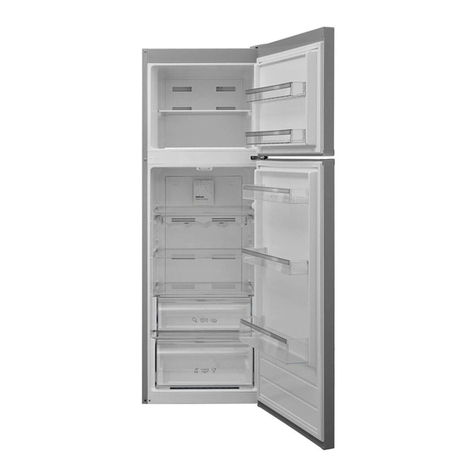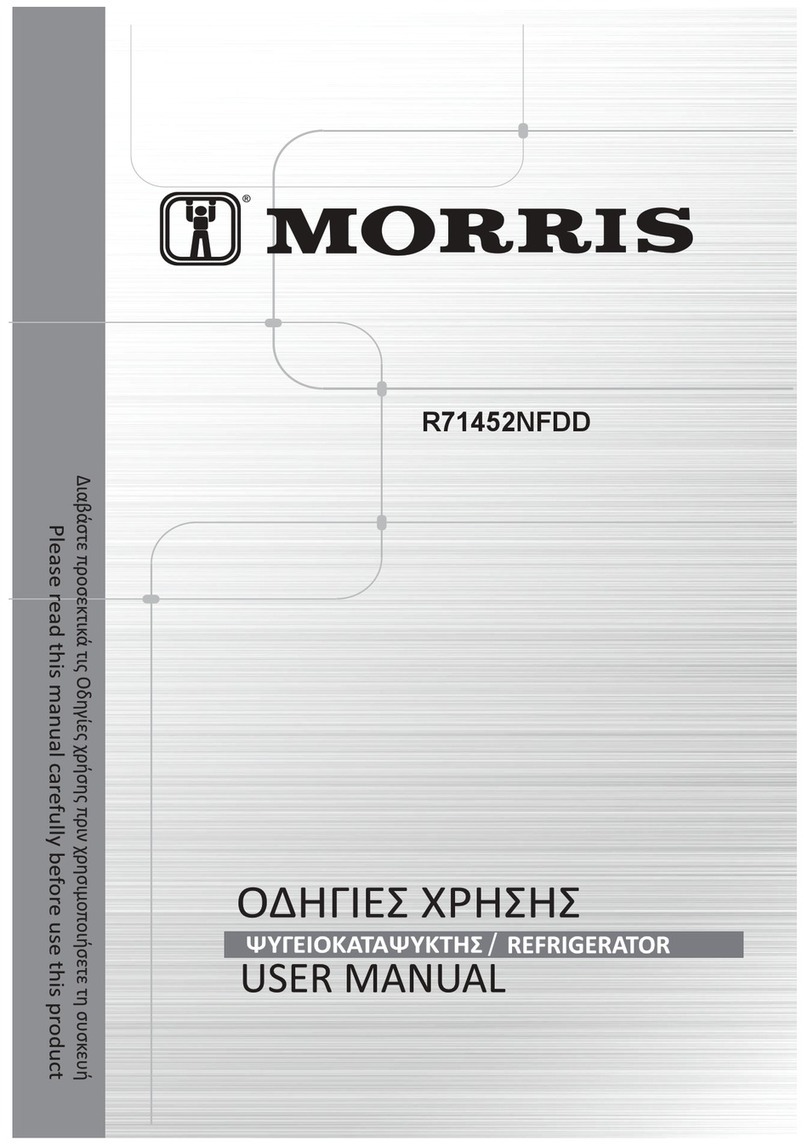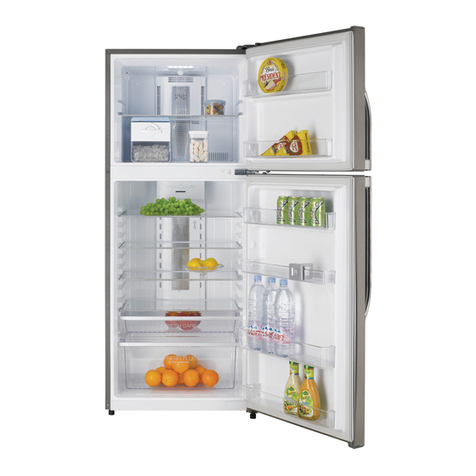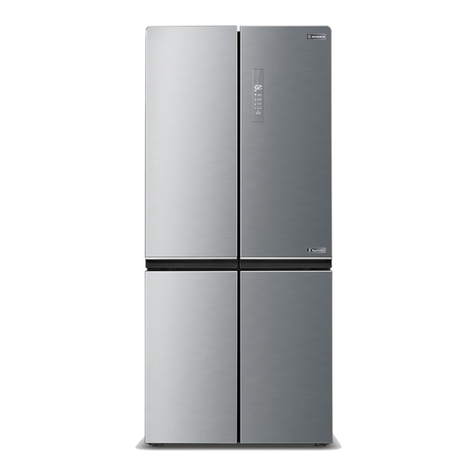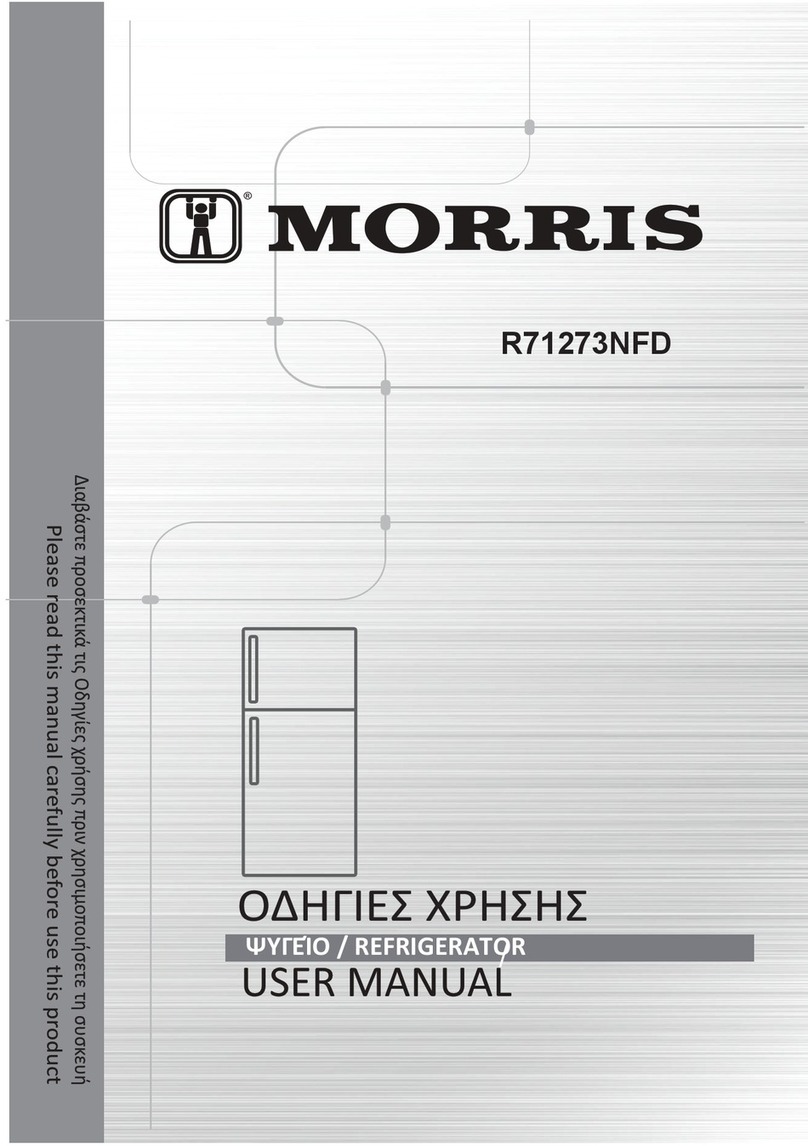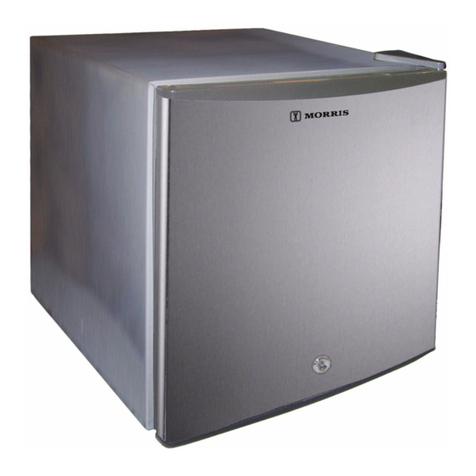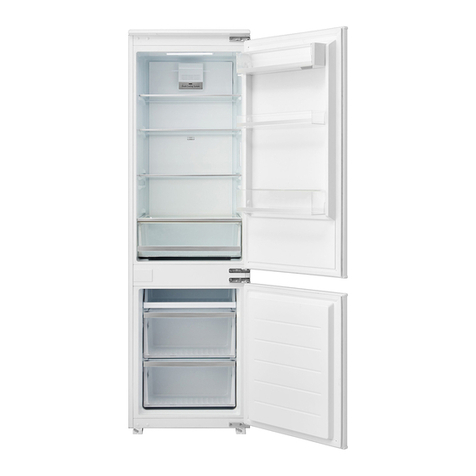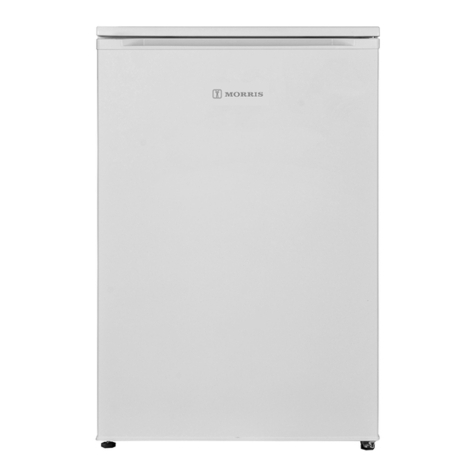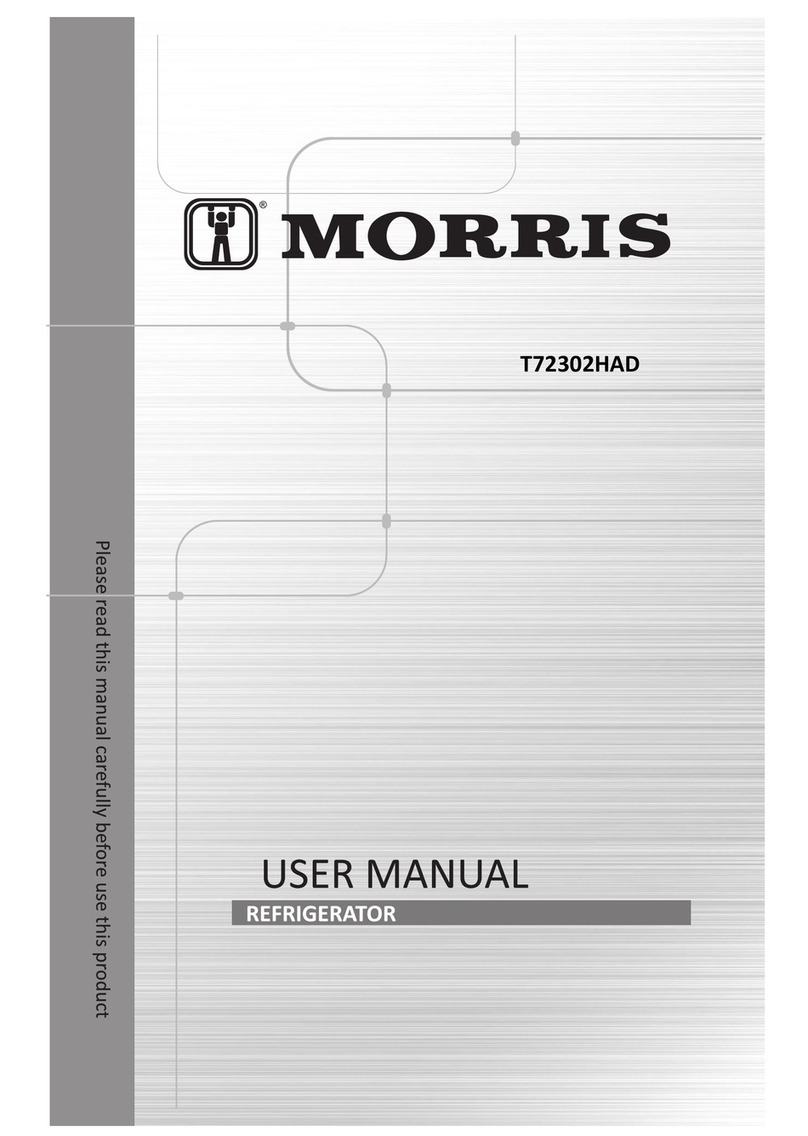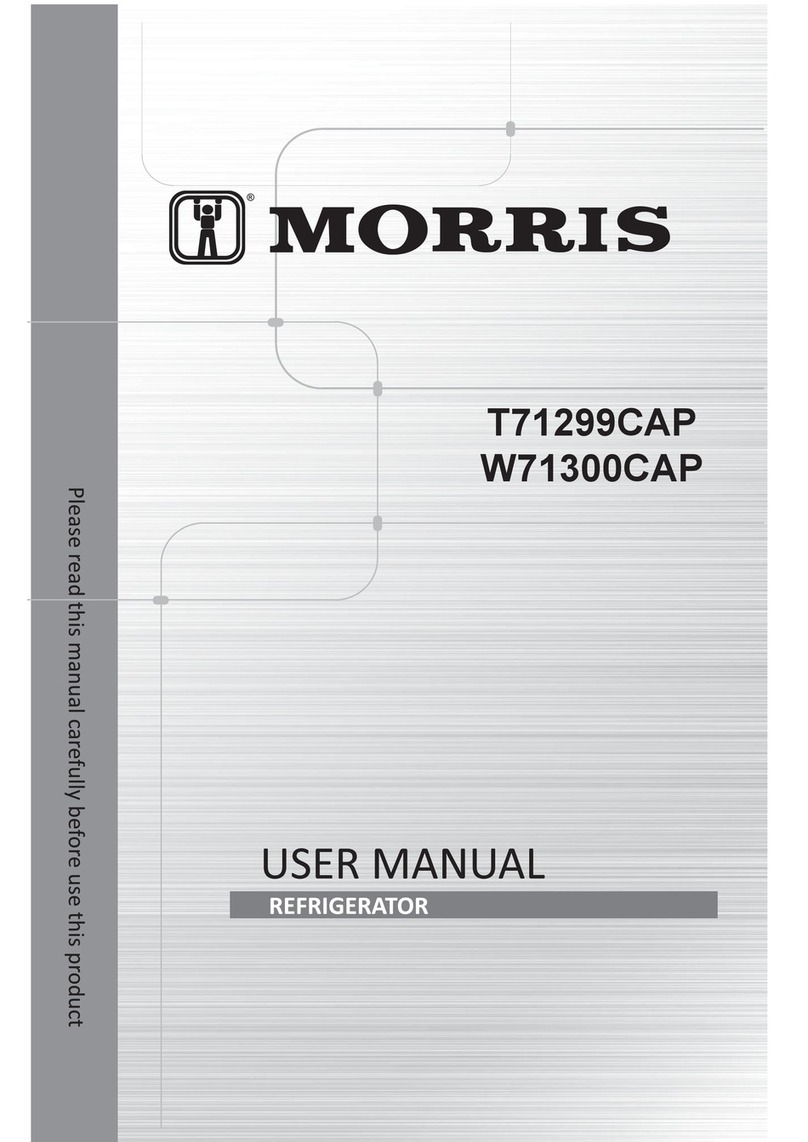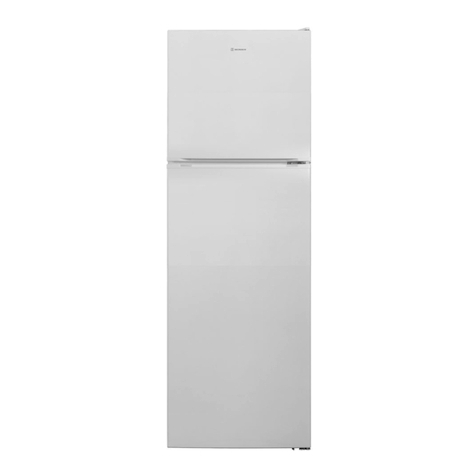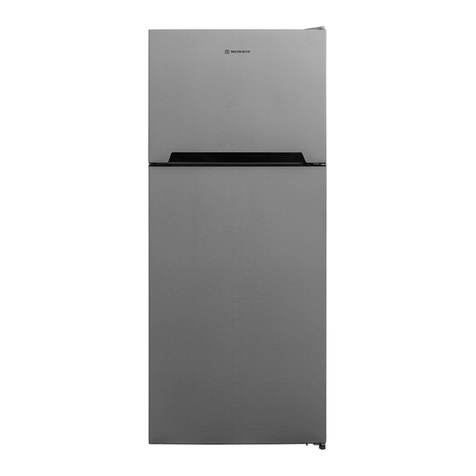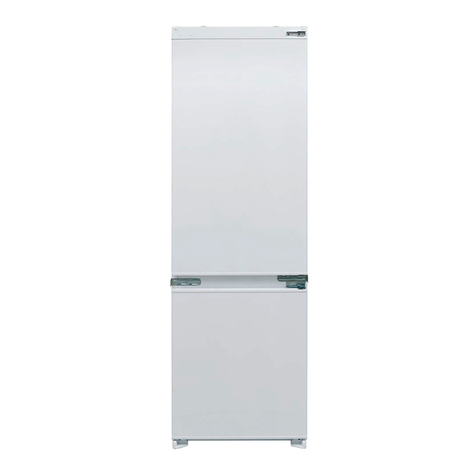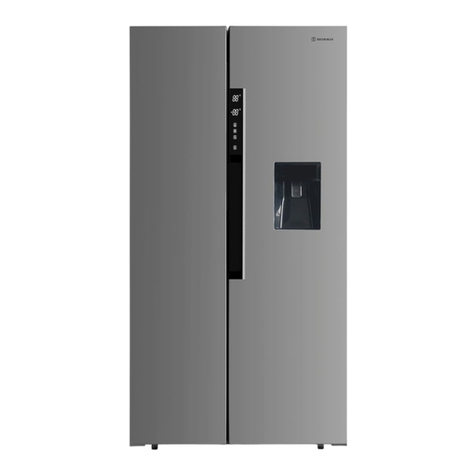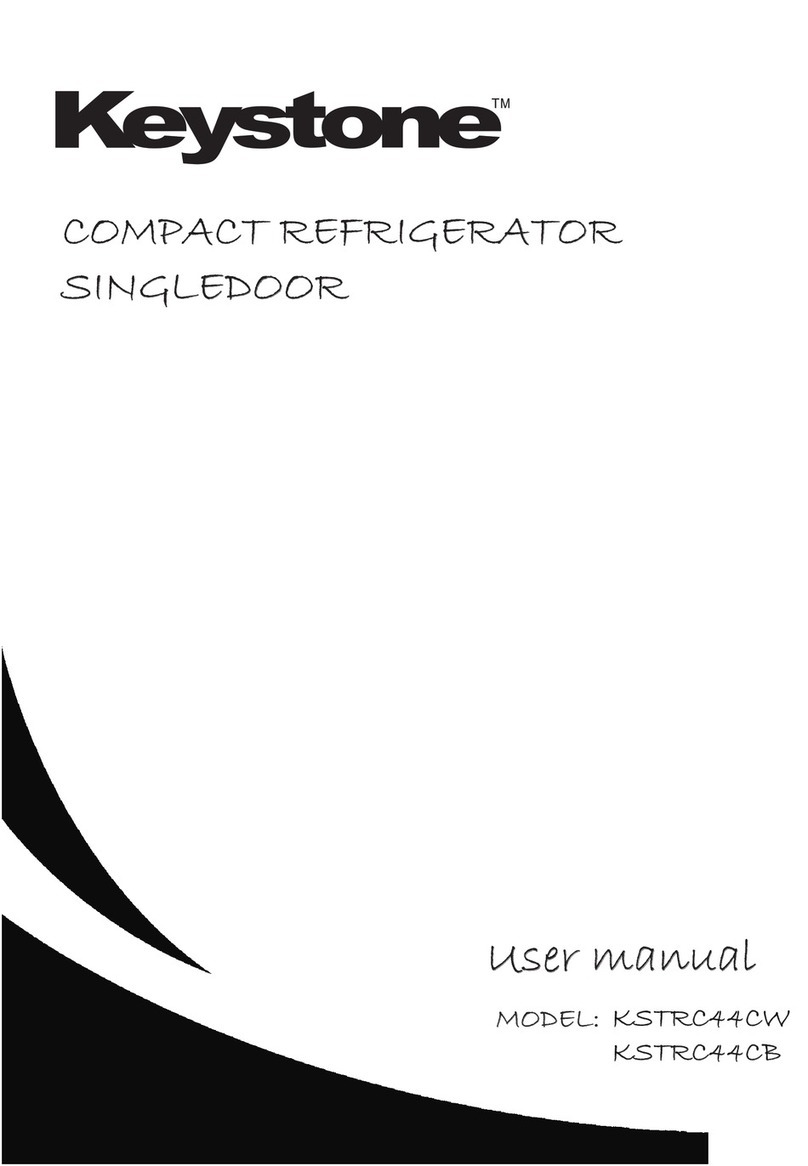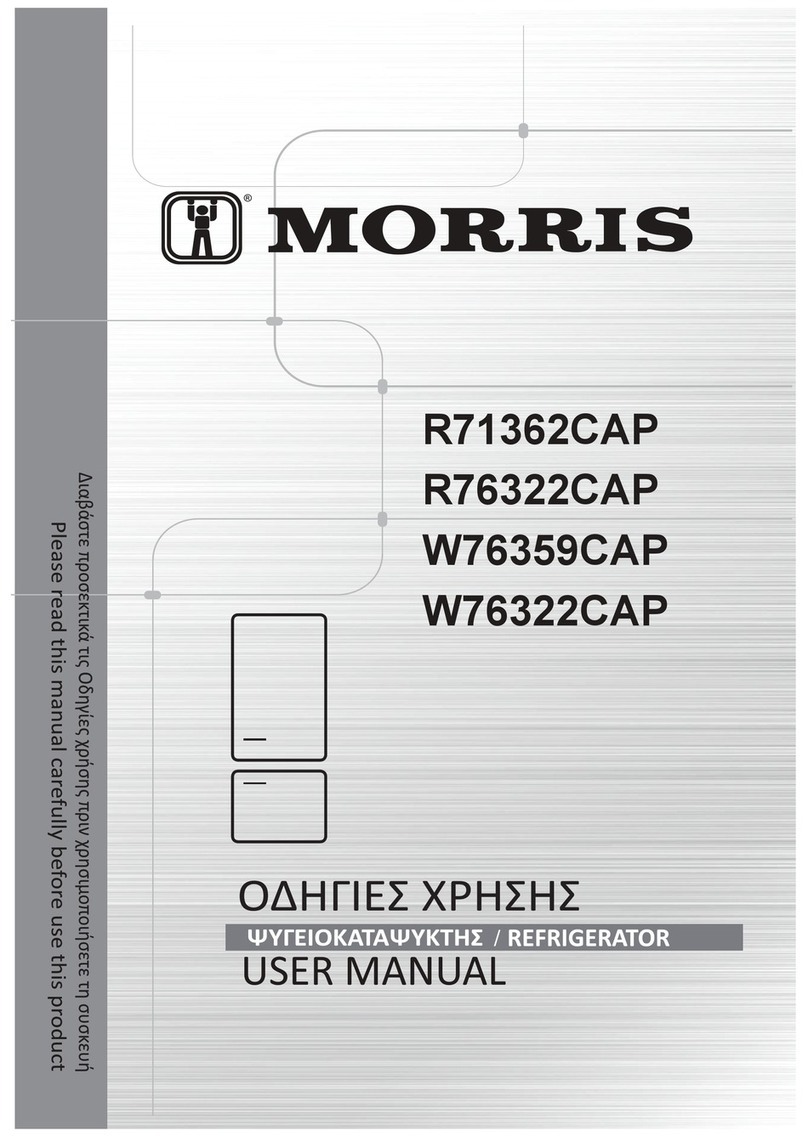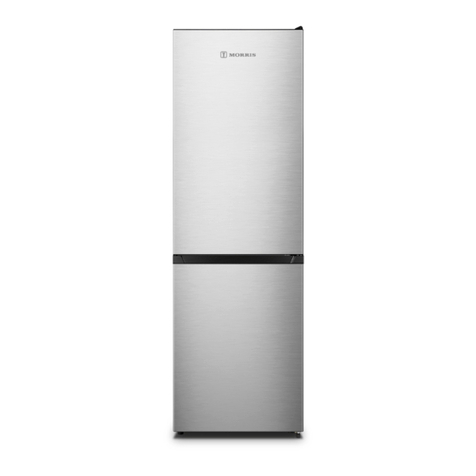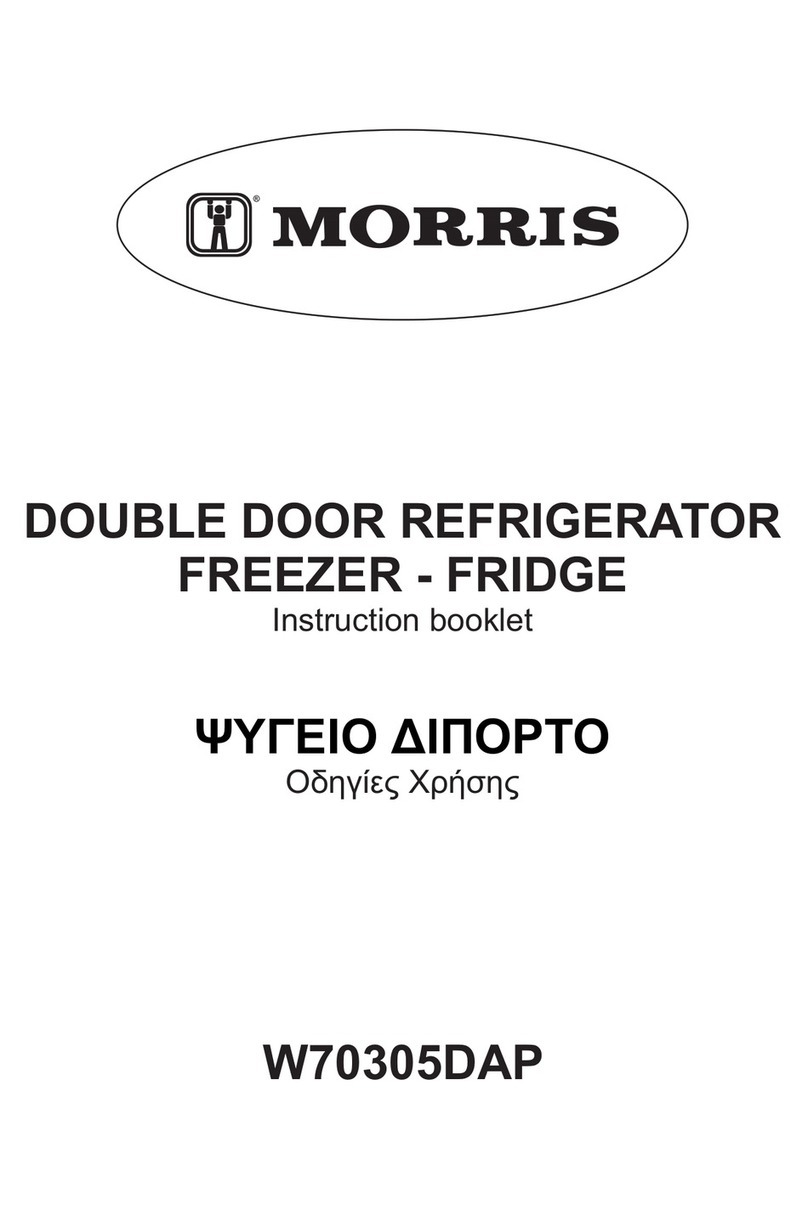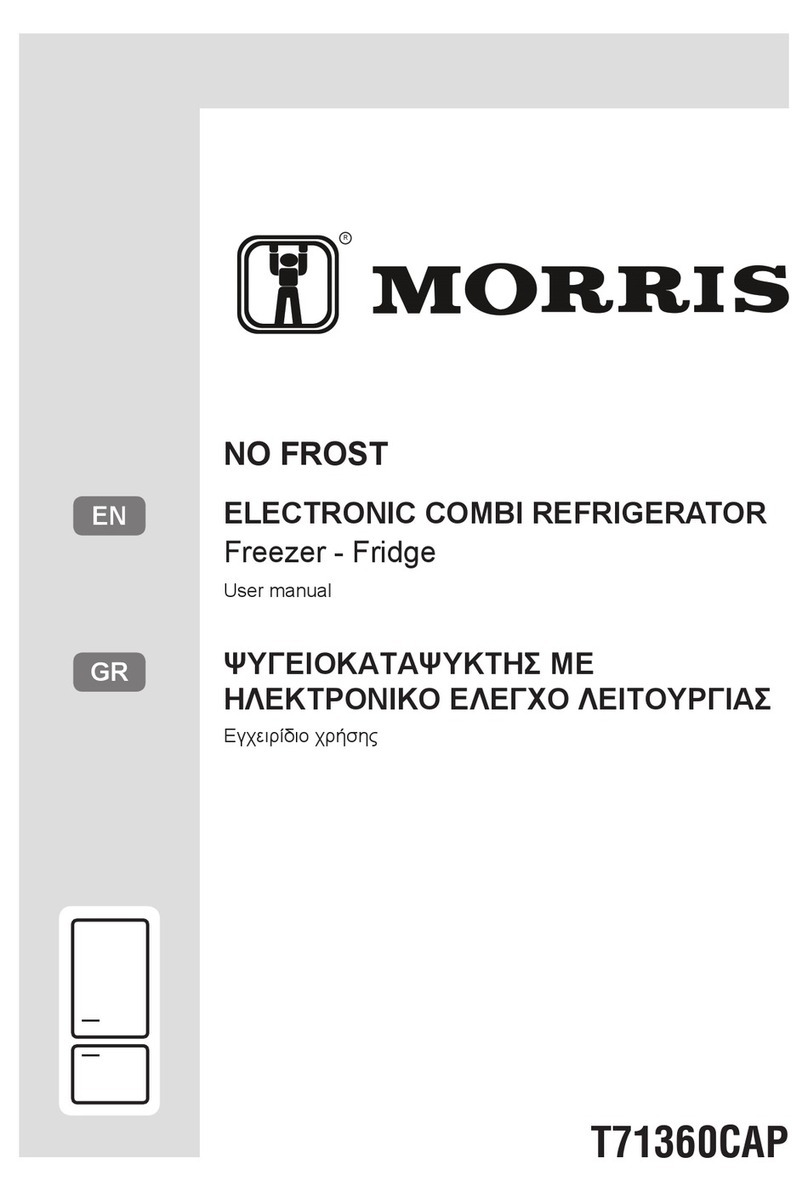
5
door open slightly: blocking it open if necessary.
◇Moving Your Refrigerator
●Remove all the food.
●Securely tape down all loose items inside your refrigerator.
●Turn the leveling screw up to the base to avoid damage.
●Tape the door shut.
●Be sure the refrigerator stays secure in the upright position during transportation. Also protect
the outside of refrigerator with a blanket, or similar item.
◇Energy Saving Tips
●The refrigerator should be located in the coolest area of the room, away from heat producing
appliances, and out of the direct sunlight.
●Let hot foods cool to room temperature before placing in the refrigerator. Overloading the
refrigerator forces the compressor to run longer.
●Be sure to wrap foods properly, and wipe containers dry before placing them in the refrigerator.
This cuts down on frost build-up inside the refrigerator.
●Refrigerator storage bin should not be lined with aluminum foil, wax paper, or paper toweling.
Liners interfere with cold air circulation, making the refrigerator less efficient.
●Organize and label food to reduce door openings and extended searches. Remove as many
items as needed at one time, and close the door as soon as possible.
ROBLEMS WITH YOUR REFRIGERATOR
You can solve many common refrigerator problems easily, saving you the cost of a possible service
call. Try the suggestions below to see if you can solve the problem before calling the servicer.
TROUBLESHOOTING GUIDE
PROBLEM POSSIBLE CAUSE
Refrigerator does not operate. Not plugged in.
The circuit breaker tripped or a blown fuse.
The refrigerator temperature control is set at
"OFF".
Turns on and off frequently. The room temperature is hotter than normal.
A large amount of food has been added to the
refrigerator.
The door is opened too often.
The door is not closed completely.
The temperature control is not set correctly.
The door gasket does not seal properly.
The refrigerator does not have the correct
clearances.
Vibrations. Check to assure that the refrigerator is level.
The refrigerator seems to make too much noise. The rattling noise may come from the flow of the
refrigerant, which is normal.
As each cycle ends, you may hear gurgling
sounds caused by the flow of refrigerant in your
refrigerator.
Contraction and expansion of the inside walls
may cause popping and crackling noises.
The refrigerator is not level.
The door will not close properly. The refrigerator is not level.
The door was reversed and not properly installed.
The gasket is dirty.
The shelves, bins, or baskets are out of position.
